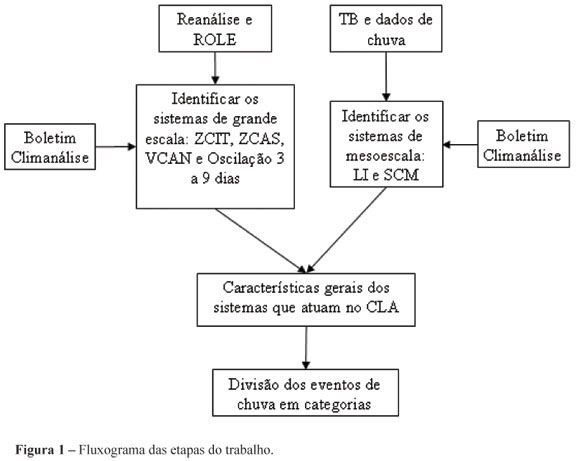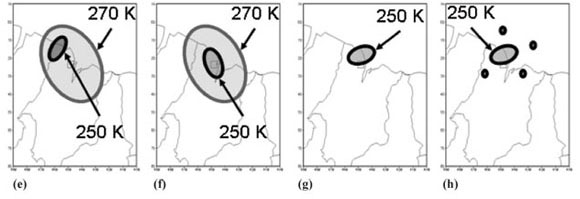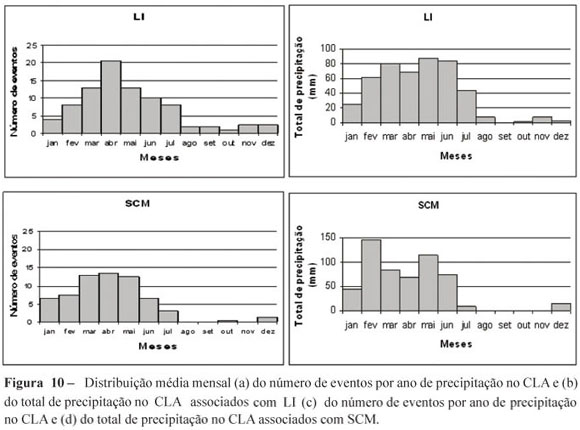The Alcântara Rocket Launching Center (CLA; 2° 22'S, 44º 23'W) plays an important role in aerospace research activities in Brazil, and so it is of interest to study the precipitation systems over the CLA region. This work aimed at characterizing the systems associated with precipitation occurrence at CLA from 2005 to 2006 by using hourly precipitation data, NCEP/NCAR Reanalysis data, brightness temperature data from GOES-12 satellite and outgoing longwave radiation data. Criteria were defined to identify large, meso and local scale meteorological systems associated with precipitation at CLA. About 40% of precipitation events were associated with large scale systems, mainly the Intertropical Convergence Zone, and about 60% (40%) of precipitation events are due to convective (stratiform) processes. The convective systems showed the following characteristics: area between 10(4) km² e 25x10(4) km², precipitation located in convective part of the system, intensification by diurnal convection, inclusion in a larger scale system and preferred southeasterly or northeasterly propagation. The systems formed from stratiform processes could be divided almost equally in two groups: reminder of convective systems previously active over CLA and systems that are not associated with any convective process.
rainfall; convective systems; Brazilian northern coast


















